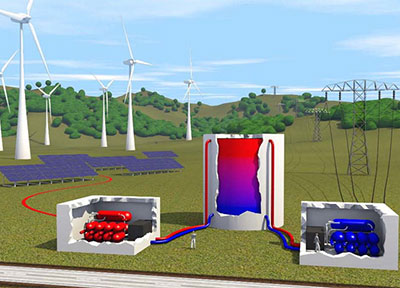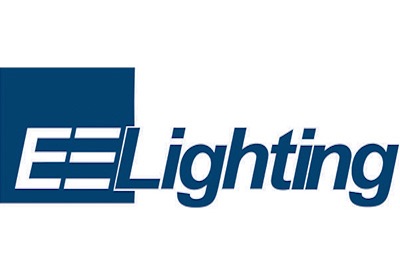Electrical Energy Storage: IEC Report on Present and Future Needs, Part 2

Feb 19, 2016
In the near future, electrical energy storage will become indispensable in emerging markets for smart grids and in renewable energy for reducing CO2, says the International Electrotechnical Commission. In a just-published document, the commission summarizes present and future market needs for electrical energy storage technologies, reviews their technological features, and makes recommendations for all electrical energy storage stakeholders. Part 1 reported on the document’s conclusions. Here in Part 2, the recommendations.
A summary of the conclusions
The IEC is convinced that electrical energy storage will be indispensable in reaching the public policy goals of CO2 reduction and more efficient and reliable electricity supply and use. It is therefore essential that deployment of storage receive long-term and robust support from policy-makers and regulators.
Conclusions regarding renewables and future grids
• The necessary volume and timing of electrical energy storage is strongly dependent on the pace of renewable energy development
• Autonomous operation, easy extension and coordination with grids are important characteristics of future electrical energy storage.
• Microgrids will be key to the smart energy use of communities, factories, buildings, etc.
Conclusions regarding markets
• The total electrical energy storage market is expected to be large, but will remain very sensitive to cost
• Some of the total market will be for conventional large-scale electrical energy storage to enable the introduction of renewable energies.
• Long-term energy storage will be needed when a very high renewable energy ratio is achieved
• The market for small and dispersed electrical energy storage is also expected to be quite large
Conclusions regarding technologies and deployment
• To assure the smooth connection of electrical energy storage to grids, additional technical requirements and the necessary regulatory frameworks need to be investigate
• Given the cost sensitivity, cost reduction is vital to implementation. Three storage technologies seem to emerge from the study as the most significant: pumped hydroelectricity (PHS), electrochemical batteries, and hydrogen/synthetic natural gas.
Recommendations fall into groups addressed to three different audiences:
• policy-makers including regulators, companies and laboratories deciding what research and product development to pursue
• IEC itself for what standards will be needed by all EES market players
Recommendations addressed to policy-makers and regulators
• 5.5.1 – Public support for development of conventional storage —given their intentions to increase greatly the proportion of renewable energies, the IEC recommends policy-makers to consider seriously the further development of conventional storage, such as pumped hydroelectricity, notwithstanding the difficulties of siting and construction.
• 5.5.2 – Long-term storage, on the order of months — the IEC’s study has shown that many governments’ current plans for how electricity will be generated and managed in the future cannot be implemented without long-term storage with capacities in the multi-TWh range. It therefore recommends policy- makers, whose actions are essential to the creation of long-term, very-large-capacity storage, to work actively on the public aspects, and to create the incentives to encourage private actors to play their part.
• 5.5.3 – Cooperation between energy sectors; coherent regulations — hydrogen and synthetic natural gas added to natural gas are likely to be essential elements of future electric grids because of their energy storage duration and capacity. The IEC therefore recommends regulators to achieve the conditions for all necessary cooperation between the energy markets in electricity and gas, including use of infrastructure.
• 5.5.4 – Incentives for development and operation of storage — the IEC recommends policy-makers to make the encouragement of storage deployment a public policy goal. The long-term storage of surplus energy from renewables is sometimes more expensive than additional generation from existing fossil-fuel plants. However, the storage necessary for future grids will only become available if private actors see an advantage in acquiring and operating it, and for this regulations including financial incentives will frequently be needed. The regulatory regime may also need to differentiate between private consumer-owned storage and storage directly connected to the regulated grid.
• 5.5.5 – Public policy for and investment in storage research — several areas are described in the IEC’s study where concentrated research and development are needed. The IEC recommends governments and public authorities with a role in research to adjust their research policies and investments to the desired targets for storage development.
• 5.5.6 – Potential barriers to the introduction of microgrids — some existing regulatory regimes hinder the introduction or operation of microgrids or their storage components. The IEC recommends these to be revised, since microgrids will be essential to future electricity distribution and should be encouraged.
• 5.5.7 – Regulations for the safety of new storage technologies the IEC expects to keep pace, as in other areas in the past, with the need for international consensus standards for the safety of new storage technologies. It recommends regulators to anticipate the requirement to guarantee this safety, and to contribute to shaping suitable International Standards upon which harmonized regulations may be based.
• 5.5.8 – Environmental regulations for new storage technologies — new storage technologies may present new challenges in protecting the natural and human environment, challenges involving the materials, conditions and land use required to implement them. The IEC recommends regulators to help ensure that standards are in place to allow an internationally agreed technical basis for any new regulations, so that unnecessary differences among countries and regions may be avoided.
5.6 Recommendations addressed to research institutions and companies carrying out R&D
• 5.6.1 – R&D targeted to low-cost materials and manufacturing — the IEC recommends targeting research and development to EES technologies with a potential for low raw-material cost and low-cost mass production techniques.
• 5.6.2 – Research on renewables’ interactions with storage — since the specifications and volume of the storage needed are largely influenced by renewable energies, the IEC recommends further study of the influence of renewable energies on the power system and the functions that storage should fulfil in consequence.
• 5.6.3 – R&D on hydrogen and synthetic natural gas used for EES — storage and use of hydrogen, and generation and use of synthetic natural gas for storing electricity, are relatively new technologies; improvements particularly in reliability and cost are needed. In addition, in order to use existing gas supply and distribution networks, technical and procurement issues will arise in infrastructure, system operation and safety. The IEC recommends the electric power sector, the gas sector and research laboratories to pursue collaborative research and development in these areas.
• 5.6.4 – Development of versatile storage management systems — the IEC recommends industry to develop storage management systems which will allow use of a single storage system for not just one but many of the applications described in the IEC study. Controllers and management systems are required which function independently of the types of the batteries being controlled11. Also, the control technology should function even when the applications belong to different actors (grid operator, end-use supplier, consumer).
Recommendation 5.6.5 – Development of local storage for grid use
The IEC recommends industry and utilities to develop the technology to use storage rationally and efficiently for both local purposes and grid purposes 12, allowing many dispersed storage installations to be used as a single, large facility.
• 5.6.6 – Development of vehicle-to-grid and vehicle-to-home —
Since electric vehicle batteries are a potential source of storage for grid regulation and electricity use outside the vehicle, the IEC recommends research and development of vehicle-to-grid and vehicle-to-home technologies.
Recommendation 5.6.7 – Architecture —
A precondition to many of the standards recommended in the IEC study is a robust architecture and management/control scheme for storage, which today is not available. The IEC recommends laboratories and industry to collaborate with the IEC to develop rapidly an architecture and management scheme, to serve as the basis for standards.
5.7 Recommendations addressed to the IEC and its committees —
Recommendation 5.7.1 – Cooperation needed for hydrogen and SNG standards
The MSB recommends the IEC to work out future standardization solutions in the domain of hydrogen and synthetic natural gas (SNG) storage in close collaboration with ISO and with industries, such as hydrogen, natural gas and petroleum, with which it has historically had few contacts.
Recommendation 5.7.2 – Architecture and structure of EES systems —
The IEC study shows that a thorough, shared com- prehension of the roles and functions of storage in all grid-related circumstances is currently not available. The MSB therefore recommends the IEC to develop an EES architecture and a funda- mental standard on the structure of EES systems, upon which all the other standards needed may be based.
Recommendation 5.7.3 – Users’ guide on planning and installing storage —
One of the determining factors in successful rollout of storage solutions will be the players’ level of understanding of the cost and functionality of the different technologies. The MSB recommends the IEC to develop a users’ guide containing suggested criteria to apply when planning and
using each specific technology (type of product) for a specific application. In addition to data on storage technology behaviour and characteristics (speed, power, energy), it will probably also need to contain information on full lifecycle cost, disposal cost, regulatory considerations, and environmental advantages and disadvantages.
Recommendation 5.7.4 – Interface, control and data element standards —
Several elements of the IEC study show a pressing need for the control and interconnection of EES installations: small-scale storage in microgrids and its connection to the grid, integration of storage systems with different technologies into a single virtual store, systems used jointly by different organizations (generation plant owner, grid operator, electricity seller) and for different applications, etc. Insofar as the relevant standards do not yet exist, the MSB therefore recommends the IEC to standardize rapidly the interfaces between storage and other grid elements, protocols for data exchange and control rules, and the data elements for the input, output and control information supplied by or to storage systems.
Recommendation 5.7.5 – Standards for systems to relieve transmission congestion —
The introduction of large quantities of renewable energies will cause transmission system conges- tion, to which storage can be a solution. Some of the resulting integrated systems, for example a hy- brid system consisting of storage combined with a wind farm, will require standards in order to func- tion correctly. The MSB recommends the SMB to initiate the standards needed.
Recommendation 5.7.6 – Standards for unit size and other factors affecting costs —
Reducing lifetime costs of storage requires, among many other things, a range of standards, such as standardized EES unit sizes and technical features to allow mass production of associated equipment. The MSB therefore recommends the SMB to launch such projects.
Recommendation 5.7.7 – Safety of new storage technologies —
The rapid growth and the new technologies involved in electrical energy storage in the near future, as well as their installation by consumers, will impose particular requirements for safety. At the same time, society and governments will need assurance of safety before the much-needed systems can be deployed. The MSB therefore recommends the SMB to set in motion rapidly the development of storage safety standards.
Recommendation 5.7.8 – Compatibility of EES with the environment —
The scale, the impact and the materials of EES all represent potential challenges to the environment, especially when new technologies are involved. Without International Standards in place the regulatory requirements may be different in different regions, which would be an unnecessary burden on manufacturers and owners. The MSB consequently recommends that standards for EES compatible with the environment be developed as soon as possible.
9. A single virtual energy storage installation.
10. These aspects of implementation will be particularly dependent on the existence of the relevant international standards.
See also Rec. 5.7.4 which mentions standardization of control for batteries with different technologies.
E.g. “Battery SCADA” – see section 3.3.4.
Read the entire document: www.iec.ch/whitepaper/pdf/iecWP-energystorage-LR-en.pdf.

















